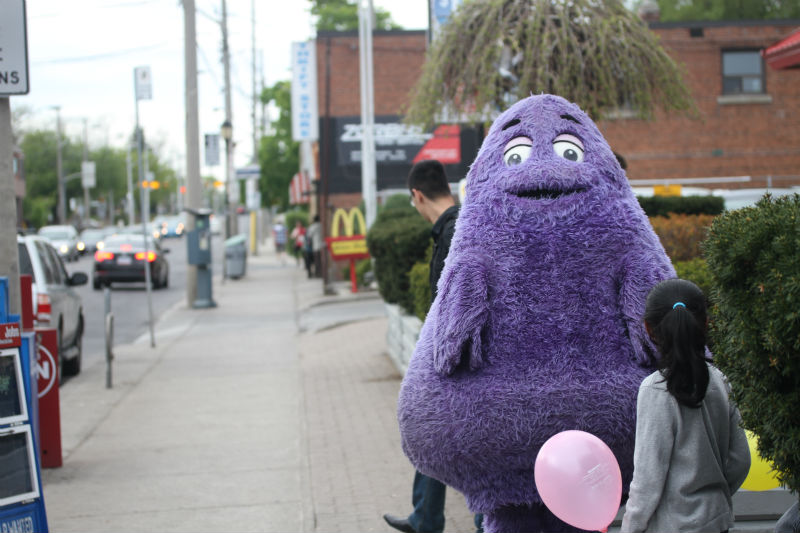 This is easy. This one is a Grimace.
This is easy. This one is a Grimace.
In the mid 19th century, French neurologist Guillaume Duchenne wanted to distinguish real smiles from fake. Interested in the response of nerves and muscles to stimulation, he applied electricity to particular parts of faces to see the results.
He divided smiles into two groups: those that involved the crinkling of the eyes – sincere smiles – and those that used only the muscles around the mouth – insincere smiles.
Today, the full smile that uses the muscles around the mouth and eyes is known as a “Duchenne smile” – and the fake one is the “Pan Am smile”, after the kind of smile you might greet someone with if it’s part of your job to be friendly.
In 1974, Leonard Rubin described three basic types of smile, based on his study of 100 people:
- The “Mona Lisa”, where the corners of the mouth go up and outwards and the upper teeth are exposed. The dominant muscle action is from the zygomaticus major. About two-thirds of people studied smile this way.
- The “canine” smile, where the canine teeth are exposed. The dominant muscle action is from the levator labii superioris. 31 per cent of people smiled like this.
- The “full dentured”, where the lips are pulled back strongly, showing both upper and lower rows of teeth. All muscles are equally dominant. Just 2 per cent of people were found to smile this way.
Cosmetic surgeons, who have to be meticulous in identifying the smiles that their patients are paying good money to try to achieve, call these three types commissure, cuspid and complex, respectively.
Phuong Nguyen, a Philadelphia plastic and reconstructive surgeon, attempts to clarify the matter using celebrities. The Mona Lisa, he says, is the Angelina Jolie. The Tom Cruise smile is a canine smile, and a Julia Roberts is the full dentured smile. This is a subjective matter. Other doctors place Jolie in the second or third categories.
Smiling is not a realm given over to easy description. Contemplate the ideal smile as recounted by one clinician in the Journal of Clinical Orthodontics:
The total number of different types of smile is frequently debated. A recent BBC article gave the total as 19.
Arguably the most important researcher into smiles over the past 30 years has been Paul Ekman at the University of California. His 1978 Facial Action Coding System, written with Wallace V Friesen, seeks to create an atlas of nearly all possible human expressions. Ekman says, in his book Telling Lies, that their technique for measuring the face can distinguish over 50 different smiles.
Confused? You’re not the only one. Perhaps the best approach is to just grin and bear it…
This article was originally published by Mosaic under a CC-BY licence
Rate and Review
Rate this article
Review this article
Log into OpenLearn to leave reviews and join in the conversation.
Article reviews